Drones doing incredible jobs around the world
The new airspace race

In 2021, US supermarket chain Kroger ran a pilot programme for drone delivery – and it's far from the first big-name brand to take to the skies when testing out new ideas.
Companies like Amazon, Walmart, and DHL have all been trialling the aircraft, with the market for drone delivery services tipped to be worth $5.6 billion (£5bn) by 2032.
And it's not just shopping. Beyond retail deliveries, drones – also referred to as Unmanned Aerial Vehicles (UAVs) – are being used across a number of other industries, too.
Click or scroll through our gallery to see the amazing jobs the nifty aircraft are doing around the world, with all dollar amounts in US dollars unless otherwise stated.
Drone duty: capturing footage of endangered turtles
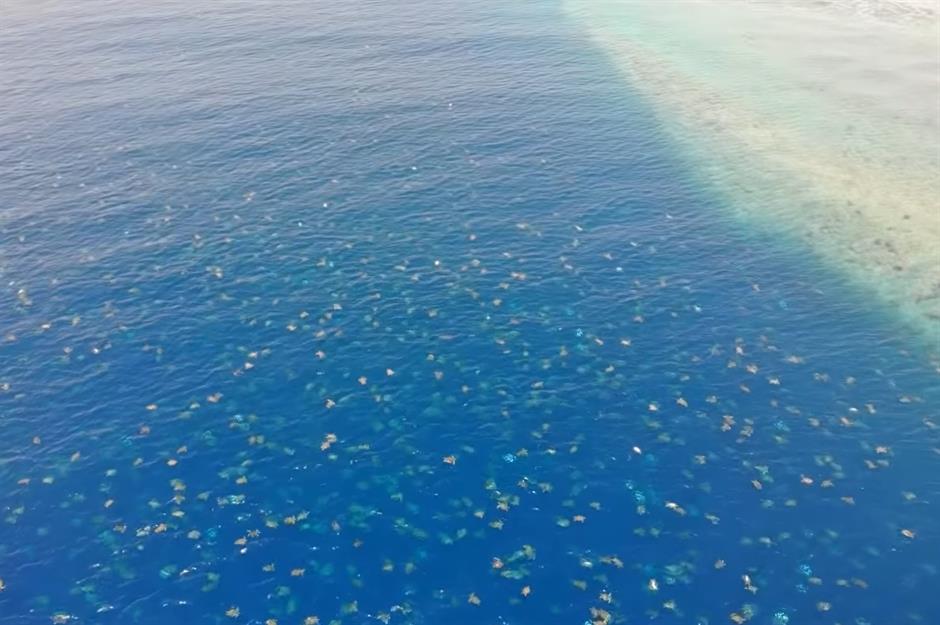
In June 2020, the Queensland Government released drone footage of 64,000 endangered sea turtles nesting at the protected area of Raine Island on the edge of Australia's Great Barrier Reef.
This is believed to be the largest sea turtle aggregation ever caught on camera. Drones are being increasingly used in conservation work to track wildlife and prevent poaching, offering a safe way to monitor animals without disrupting them.
Drone duty: conservation work
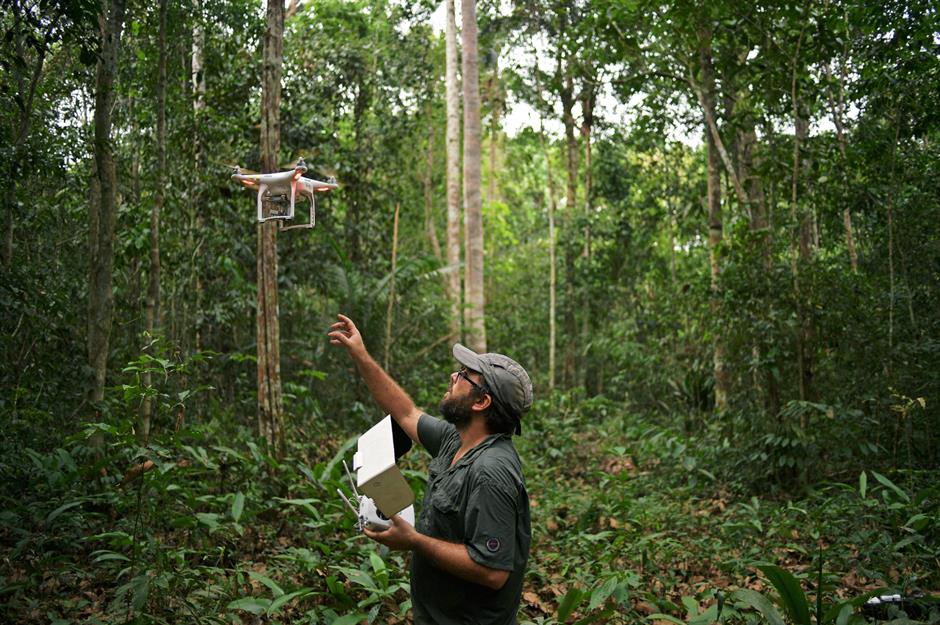
On a similar note, the World Wildlife Fund has donated drones to local authorities and Indigenous groups in the Amazon rainforest.
The drones are used to map areas of the jungle, allowing the charity to calculate the proportion of land that has been deforested. It also helps them to deduce the causes of such activity, which can include illegal logging.
Drones are also used by the organisation to check if forests are being managed in accordance with Forest Stewardship Council standards.
Drone duty: detecting and fighting wildfires
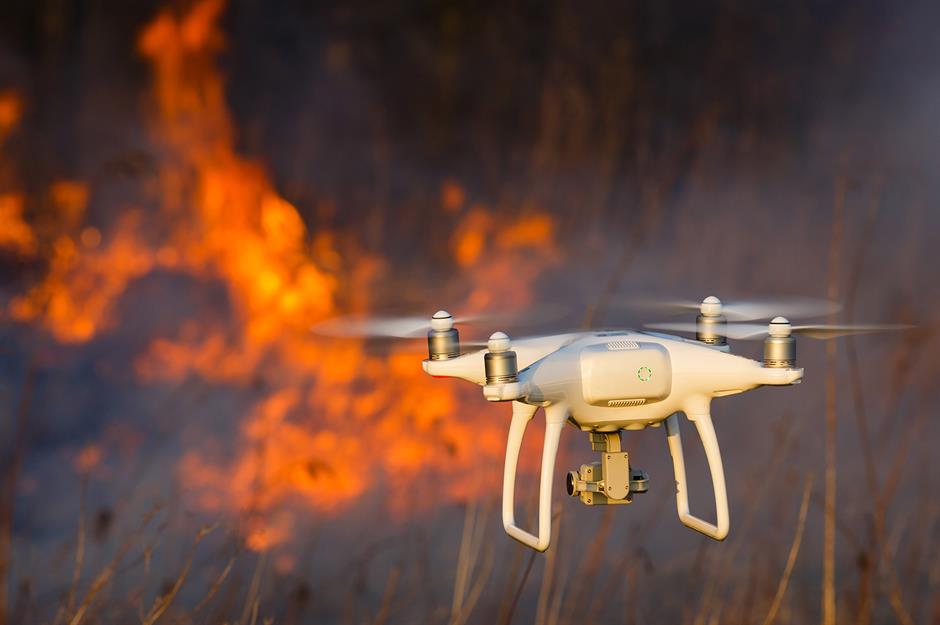
The California Department of Forestry & Fire Protection equips drones with sensors that can identify areas that could potentially lead to fire spreads.
This is also a way to limit firefighters' exposure to danger. The drones are small enough to enter a structure to inspect the situation, while their lights can improve visibility in smoky conditions.
In addition to this, the US Forest Service uses drones for monitoring purposes, as well as for dropping "dragon eggs". These are small plastic balls that are used to start small prescribed blazes in the path of a wildfire, depriving it of fuel.
Drone duty: mapping the coastline
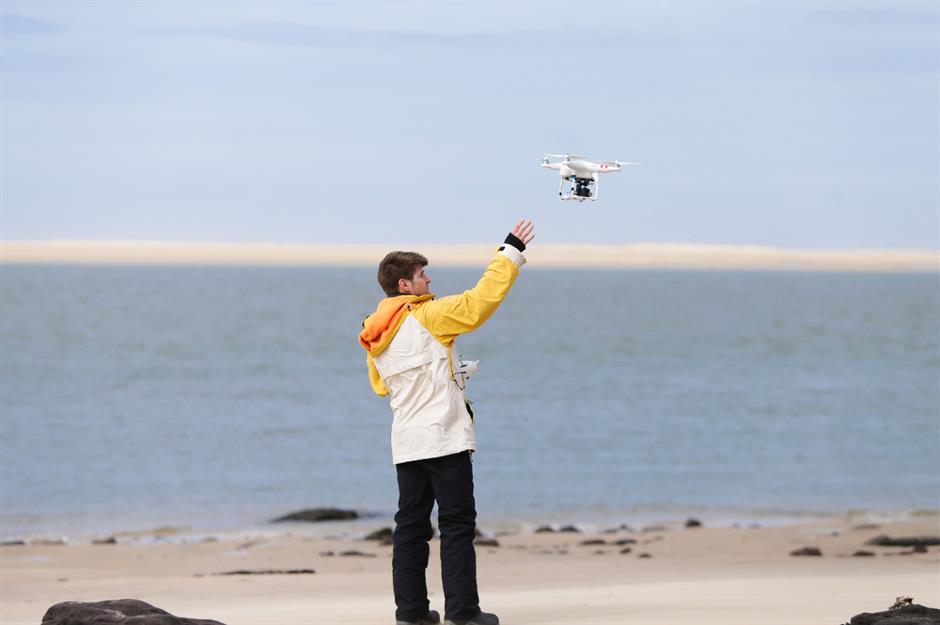
Drones are also making waves in the field of geography, capturing footage and imagery that can be used for mapping.
Back in March 2017, for example, the researcher shown here used a drone to map the coastline along the Petit Nice beach in France, allowing them to evaluate coastal erosion.
Drone duty: delivering car parts
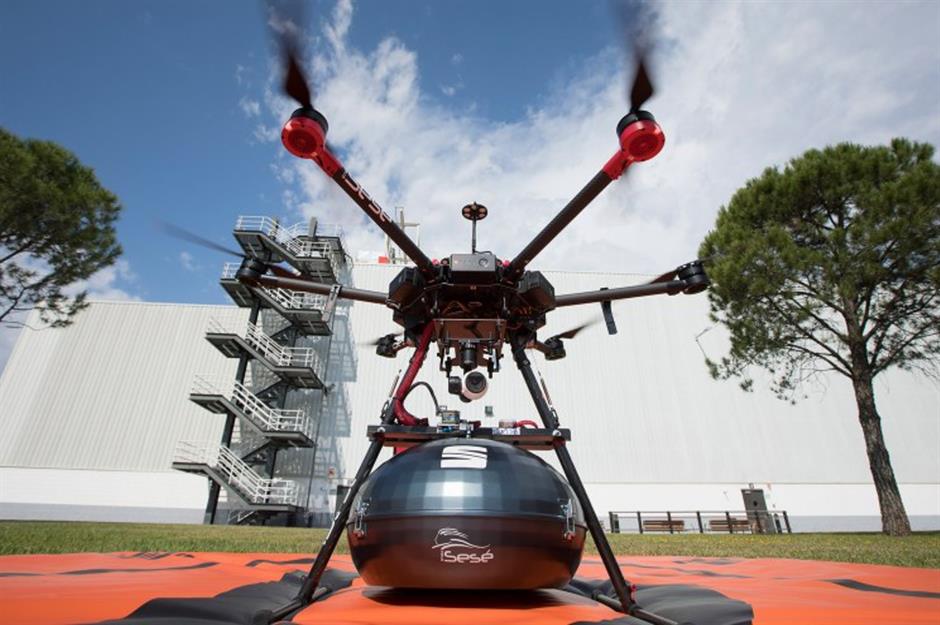
In 2019, car manufacturer SEAT partnered with logistics company Grupo Sesé to deliver car parts via drone.
Steering wheels and airbags are now being sent in by UAVs to the company's Martorell factory near Barcelona, Spain, cutting delivery times by 80% to just 15 minutes.
In fact, the drones proved so successful that SEAT started testing them within the factory itself, with hopes that they can develop a sophisticated system that will allow drones to deliver parts to specific workers as and when needed.
Drone duty: aircraft checks
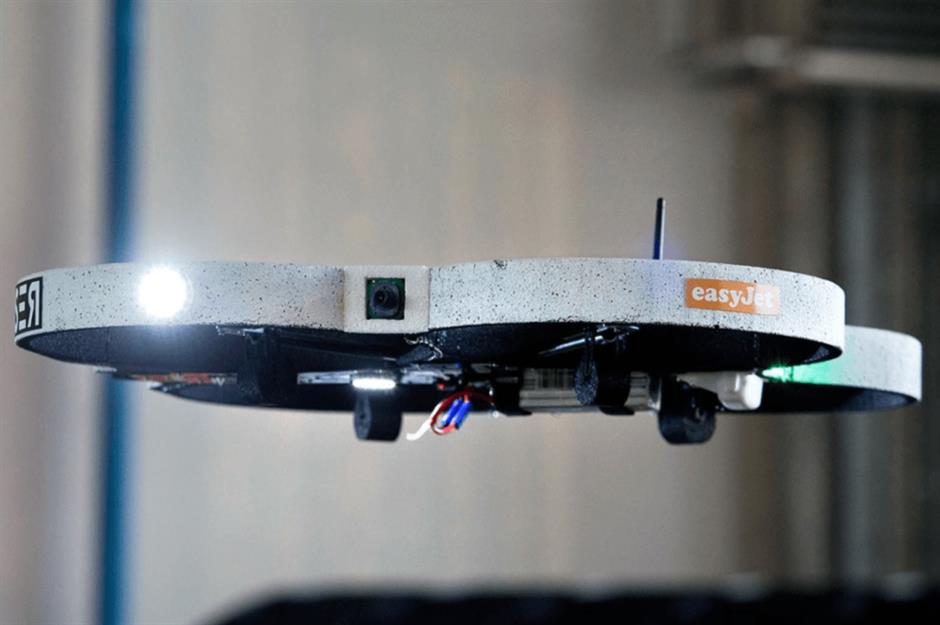
Since 2015, UK airline EasyJet has been using drones to carry out safety checks on its aircraft, reducing the time that these procedures take from a full day to just a few hours.
Following successful trials, the technology was rolled out in 2018 at two of the airline's maintenance hangers at UK airports Gatwick and Luton.
South American airline LATAM announced in May 2022 that it has also started using drones to inspect fuselages.
Drone duty: military surveillance
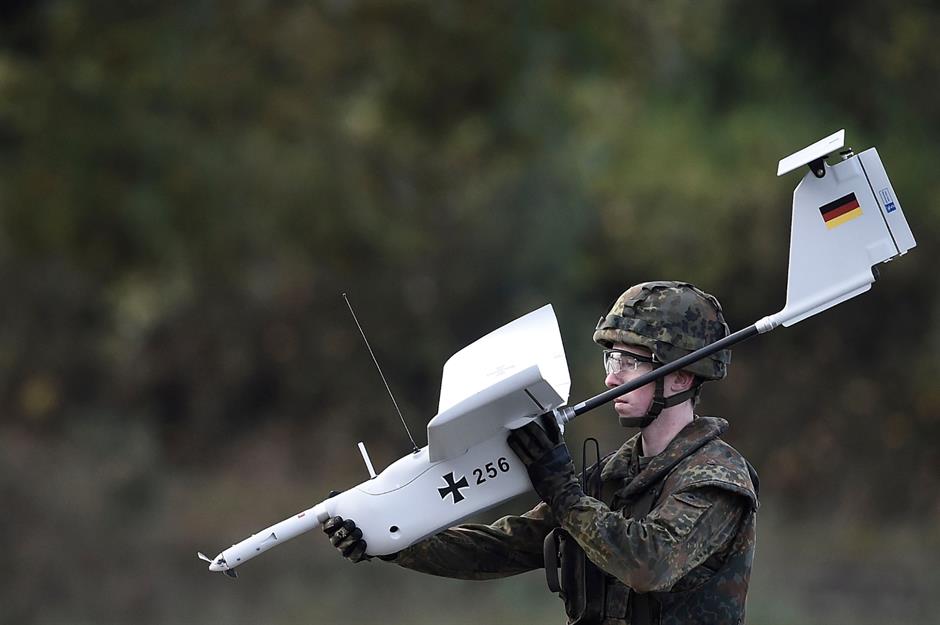
In 2005, the German army commissioned aviation company EMT to develop a UAV concept that can be used to carry out intelligence, surveillance, and reconnaissance operations.
The resulting Aladin drones are able to function both day and night, as well as in all weather conditions. It can be assembled and dismantled in the field in just five minutes, without the need for any tools.
Drone duty: investigating terrorism
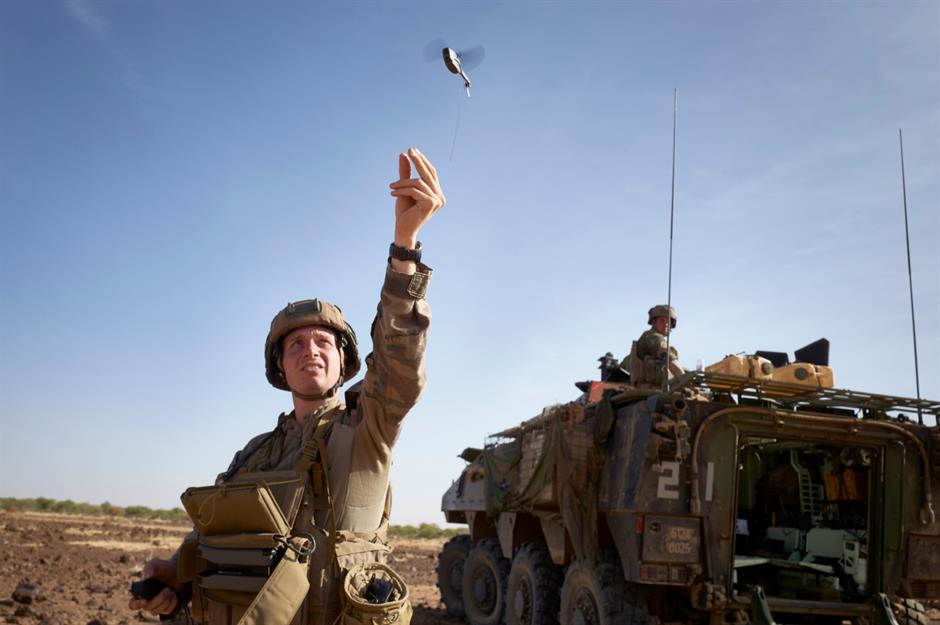
With the West African nation of Burkina Faso and its neighbouring Mali both falling victim to widespread terror attacks, the French Army used mini drones in to investigate terrorism and the activities of Jihadist groups as part of its "Bourgou IV" operation.
The drones, pictured in November 2019, were capable of monitoring an area with a radius of 1.2 miles (2km).
Drone duty: entering explosive environments
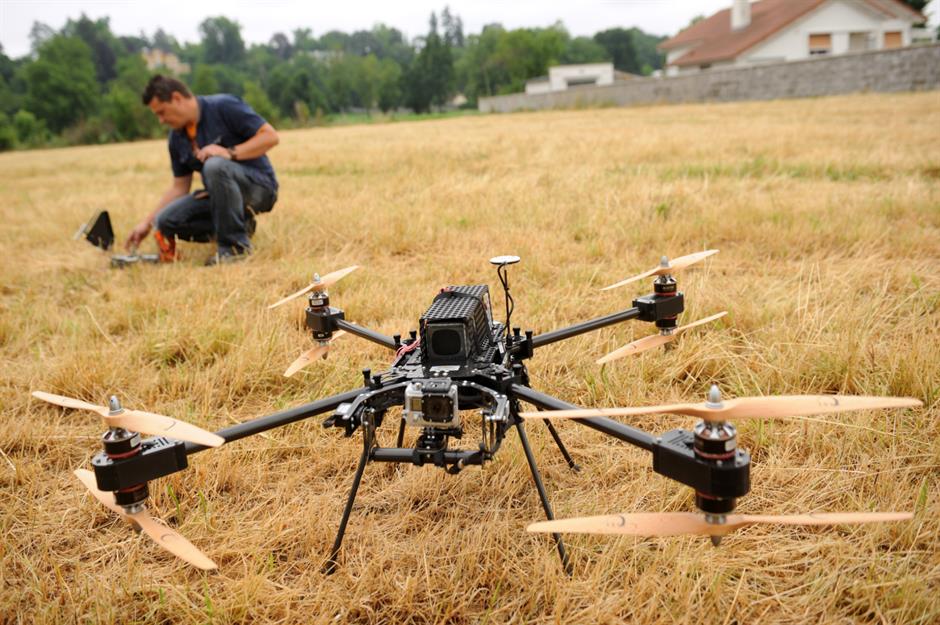
French company Xamen Technologies tested drones that could be used in potentially explosive environments. While the firm entered liquidation in 2018 due to a lack of funds, others are still pursuing the possibilities.
In the US, Texas-based Larson Electronics has developed an explosion-proof drone, while researchers in Oklahoma are using drones to survey minefields and to advance machine learning that can detect undetonated munitions.
A teenager in Ukraine even created his own mine-detecting drone while sheltering from the Russian invasion.
Drone duty: capturing news footage
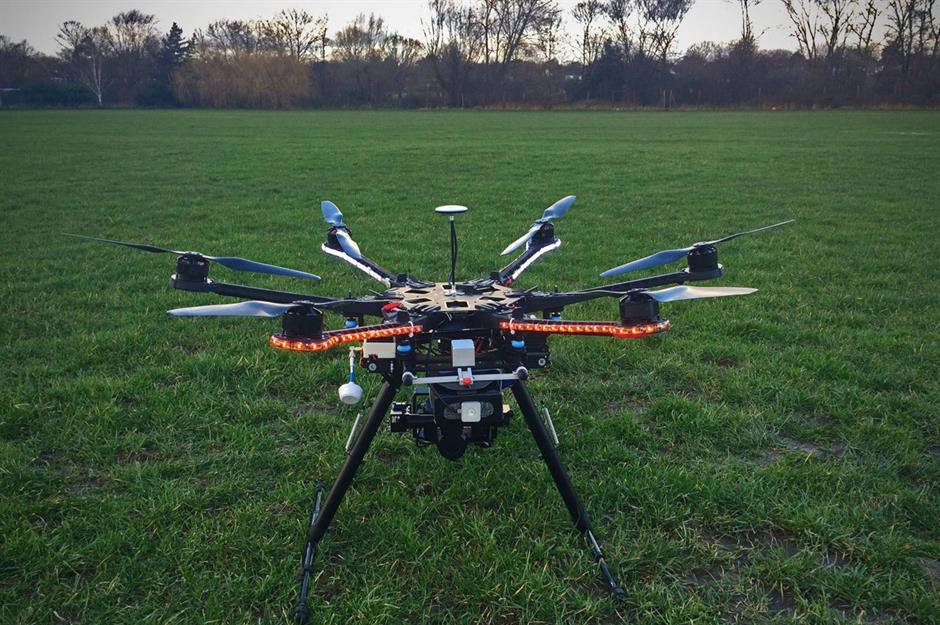
Ever wondered how news channels capture the sweeping panoramas that illustrate their stories? Chances are that the footage is taken by drones.
The BBC, for example, is one of the world's first media organisations to create its own in-house team of drones and has been using the devices for close to a decade.
Its drones are used to capture exclusive footage and deliver unique aerial angles that simply can't be achieved with helicopters.
Drone duty: pet rescue
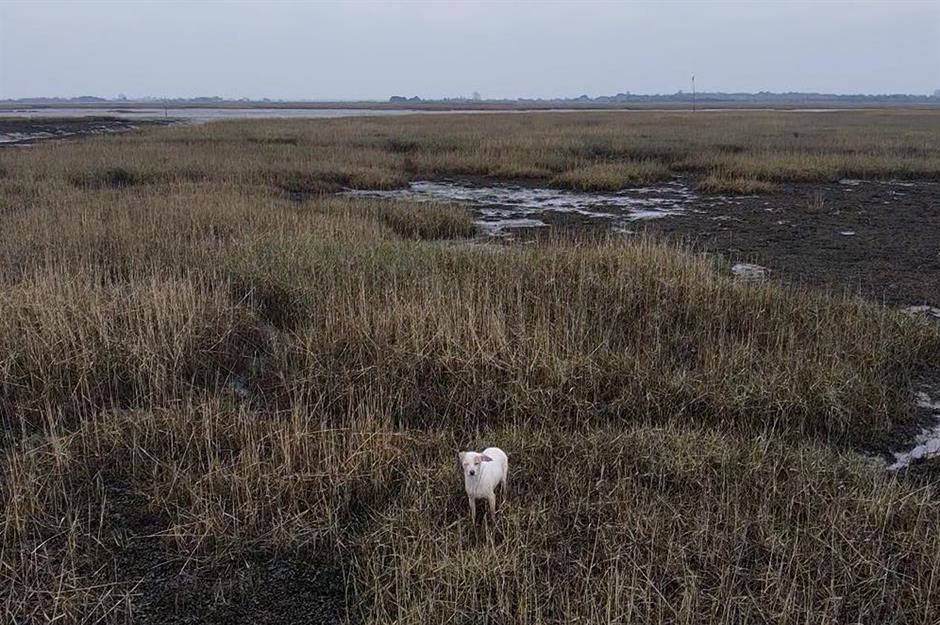
When a dog went missing in an inaccessible marshland area in Hampshire, England, in January 2022, a bunch of local volunteers came up with a genius way to bring the pooch home.
The Denmead Drone Search & Rescue group tied a sausage to a drone, hoping it’d lure the beloved pet to safety amid the fast-rising waters.
The plan worked as intended and Milly the Jack Russell was happily reunited with her owners. Even more delightfully, she also caught the sausage, too.
Drone duty: a flying ambulance

In 2014, a Delft University of Technology grad student came up with the concept of an ambulance drone that featured a built-in defibrillator (pictured). Fast forward to today and the ambulance drone is slowly but surely edging its way into the medical mainstream.
In December 2021, Swedish firm Everdrone delivered a defibrillator by drone to save the life of a 71-year-old man who had experienced cardiac arrest while shovelling snow in Sweden.
A doctor who happened to be driving past saw the man collapse and called the emergency services – and just over three minutes later, the drone arrived to deliver the lifesaving equipment.
Describing the incident in a news story, the Everdrone team wrote: "For the first time in medical history, an autonomous drone helps save the life of a cardiac arrest patient".
Drone duty: delivering blood supplies
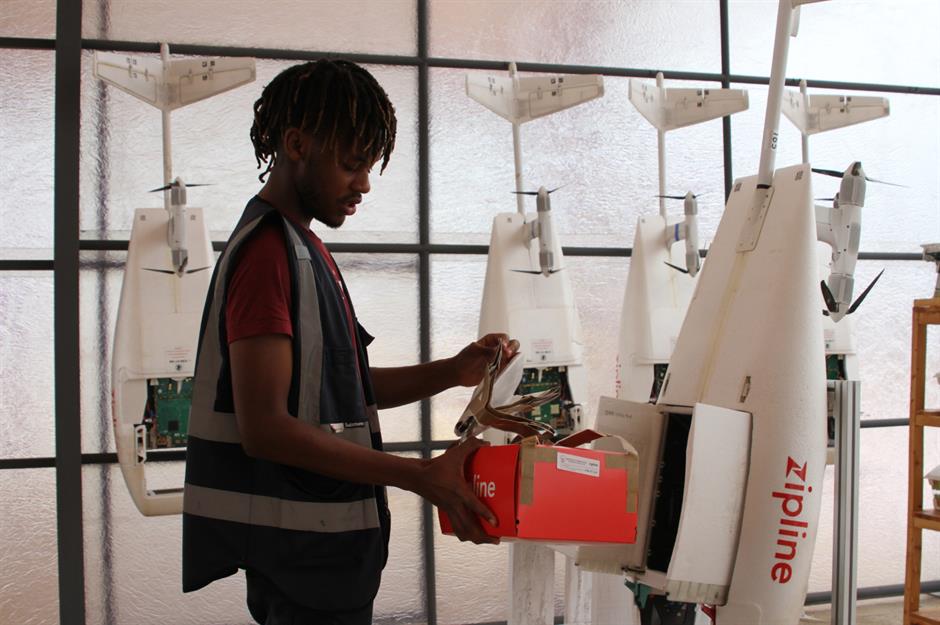
In African countries such as Rwanda, Tanzania, and Ghana, drone delivery company Zipline has been using UAVs to ensure life-saving medical items can reach remote rural clinics.
Partnering with governments, pharmaceutical companies, and healthcare providers, and delivering the likes of blood supplies and vaccines, the California-born company played a vital part during the recent COVID-19 pandemic.
Each Zipline drone can carry 4lb (1.75kg) and travel at speeds of up to 68 mph (110 km/hr) in all weather conditions. In 2022, the firm announced that it's also partnered with African online retailer Jumia to deliver household goods to customers in remote areas.
Drone duty: reaching remote locations
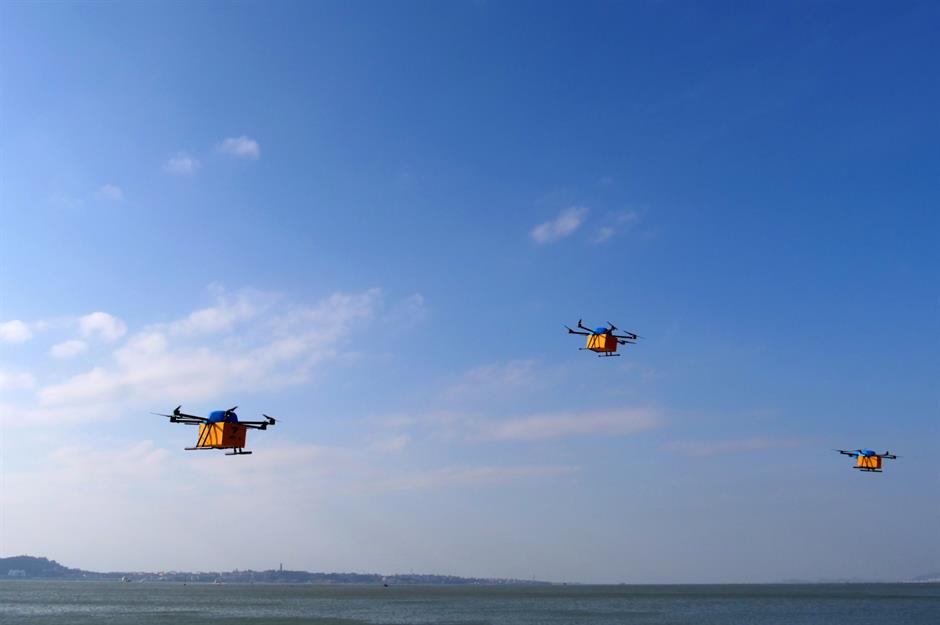
And on that note, companies around the world are trialling ways to send drones into remote locations.
In 2017, Chinese e-commerce giant Alibaba trialled the use of drones to carry deliveries over water for the first time. The UAVs carried six boxes of passion fruit – with a combined weight of 26lb (12kg) – from Putian in East China's Fujian province all the way to Meizhou Island.
JD.com, another Chinese online retailer, now offers drone delivery to rural communities that cannot be easily accessed via traditional land routes.
Drone duty: delivering chemotherapy drugs
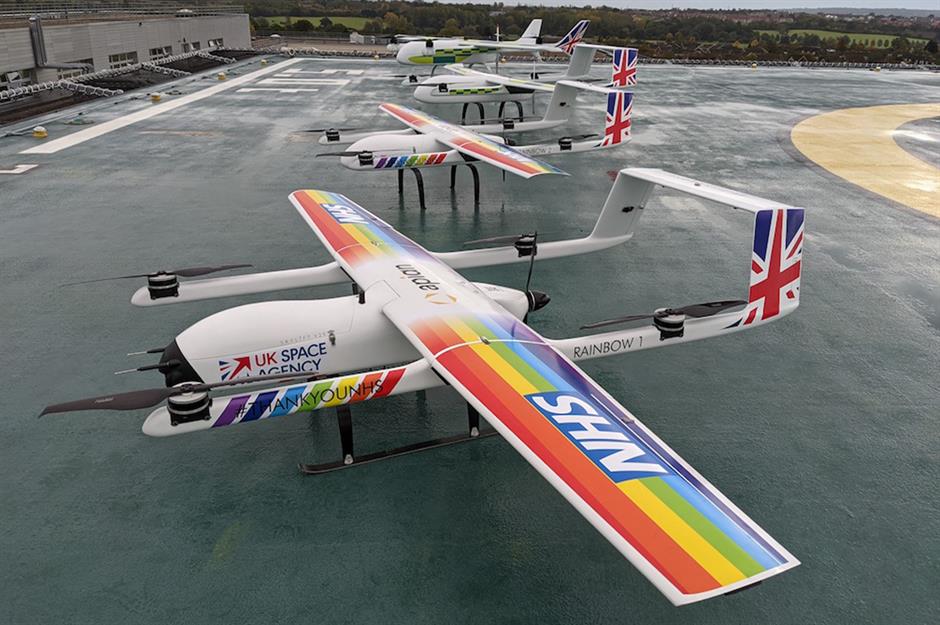
For cancer patients on the UK's Isle of Wight, receiving chemotherapy typically requires an arduous journey by ferry to the mainland.
However, that could be set to change. Working with technology firm Apian, the NHS is trialling "drone chemotherapy". This involves UAVs bringing the vital treatment to the island's hospital, meaning there's no need for patients to travel to the mainland.
The drone delivery takes around 30 minutes, compared to the current delivery time of four hours.
Drone duty: mapping cholera hotspots
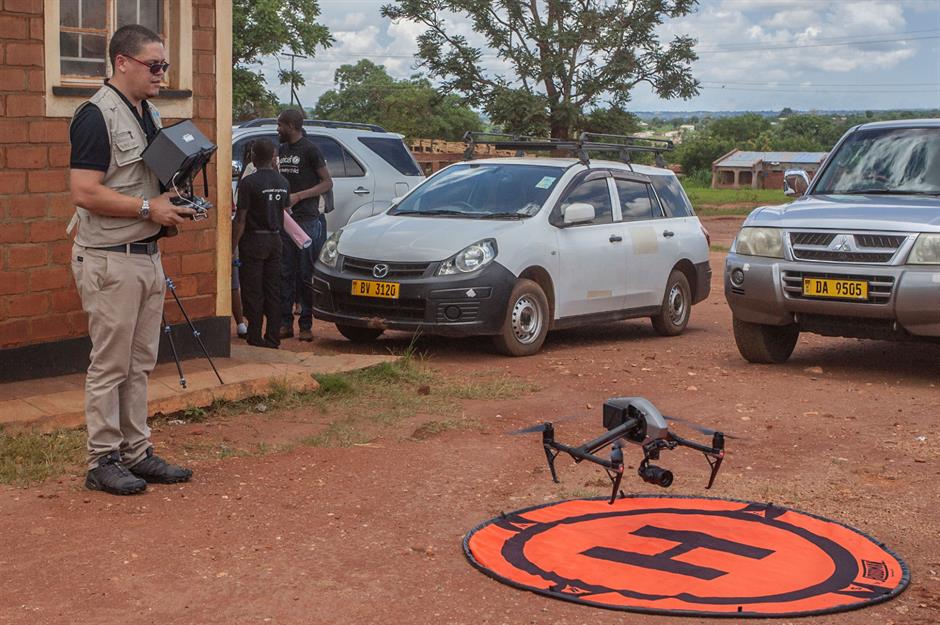
In 2018, children's charity UNICEF enlisted drones to record cholera hotspots during an outbreak of the disease in Malawi.
The data was used to create maps, which allowed both researchers and communities to work together to link the disease with possible causes of infection, such as population density, water sources, and waste management.
UNICEF's work with drones has proven to be so successful that it launched its Drone & Data Academy in 2020, giving students the opportunity to learn how to build and pilot drones for data collection.
Drone duty: disinfecting public places
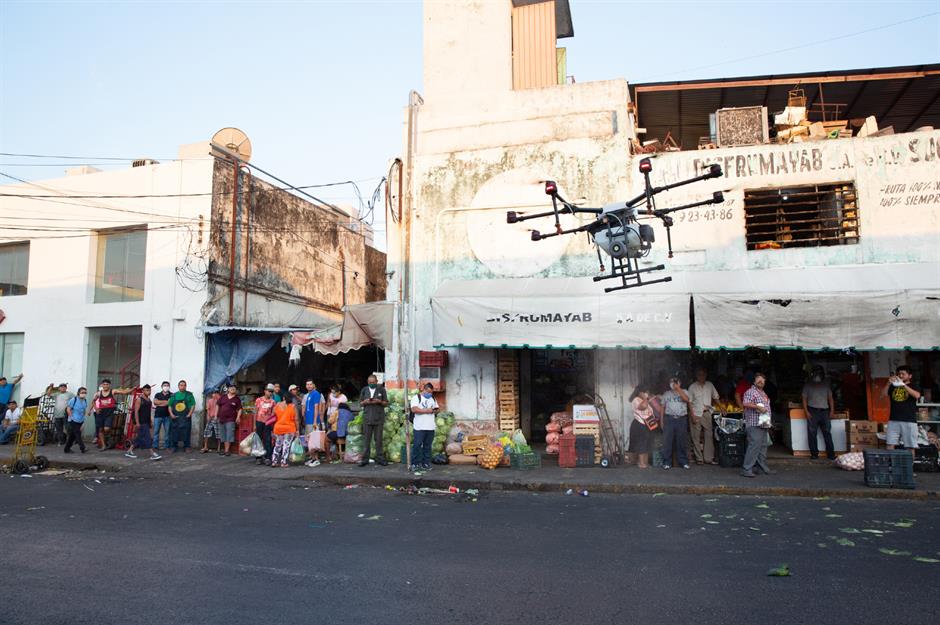
In Mérida, Mexico, drone company Prospective Vision has used UAVs to spray disinfectant over public places, including the popular San Benito market in the historic city centre (pictured).
The company partnered with the city council to arrange for a sodium chlorite disinfectant to be sprayed over public spaces in a bid to reduce the transmission of COVID-19. It was one of the first regions of Mexico to pursue this type of safety procedure.
Drone duty: enforcing lockdown rules
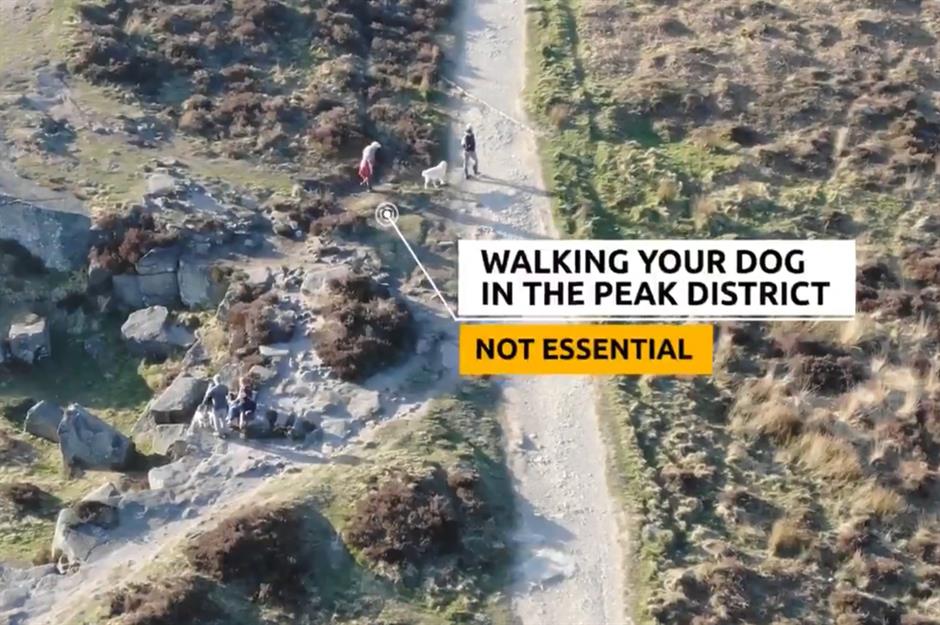
In the UK, meanwhile, drone-captured footage was used by the police to call out rule-breakers during the nation's COVID-19 lockdown.
The image shown here is from a video shared by Derbyshire Police, which was filmed in the Peak District National Park to illustrate what counted as non-essential exercise.
During the strictest lockdown period, UK citizens could only exercise once a day near their homes and were not allowed to drive to beauty spots; public information campaigns like this played a key part in ensuring compliance.
Drone duty: recording live sport
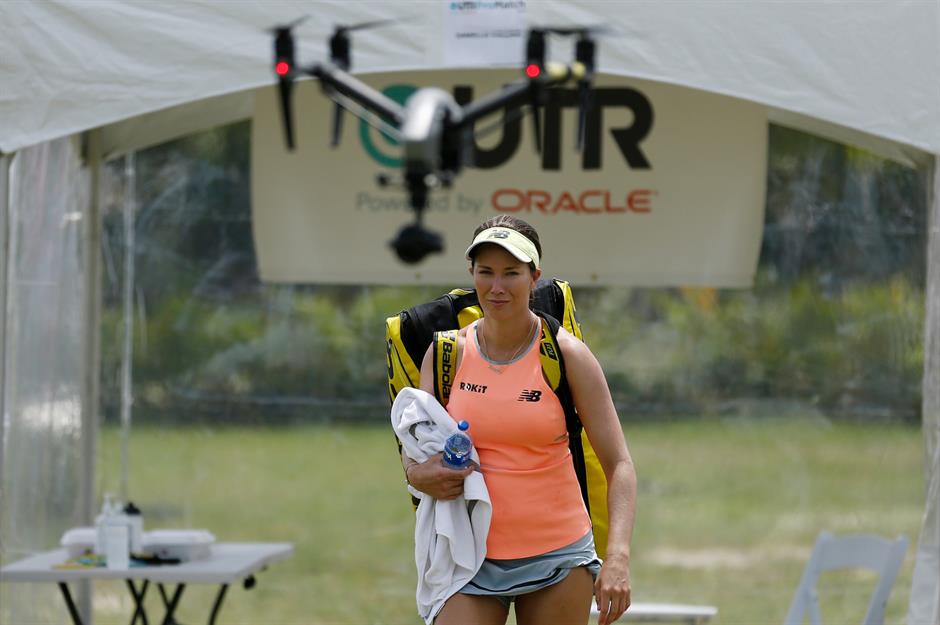
Another way drones helped mitigate the threat of COVID-19 could actually also hint at the future of how we enjoy sport games.
On 23 May 2020, drones were used to record a tennis match between Danielle Collins (pictured) and Alison Riske as part of a mini-tournament in Florida. With lockdown restrictions gradually starting to lift, the match was an opportunity to welcome back competitive sport.
The drone-captured footage was broadcast live on Tennis Channel International, and streamed on Facebook and Twitter.
Drone duty: delivering library books to school children
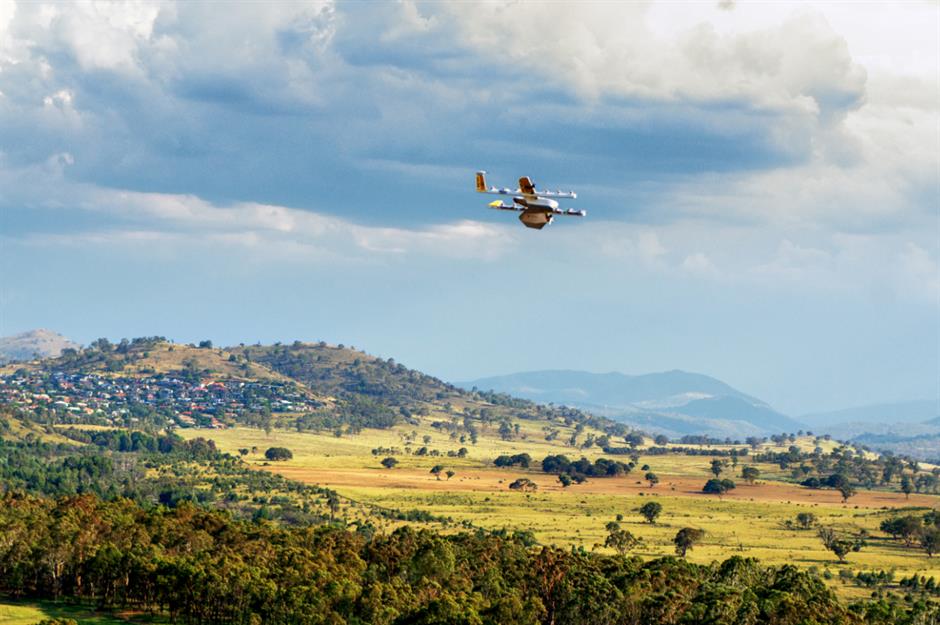
Google's parent company Alphabet Inc. owns a drone company called Wing, which enables people to order goods from local businesses that can be delivered straight to their homes.
Wing received approval for commercial journeys in the US in early 2019, and the company currently operates in select parts of America, Australia, and Finland.
During the 2020 pandemic, Wing partnered with a local library to deliver books to school children in Montgomery County, Virginia. And it's been helping out the Girl Scouts in the area, too...
Drone duty: delivering cookies for Girl Scouts
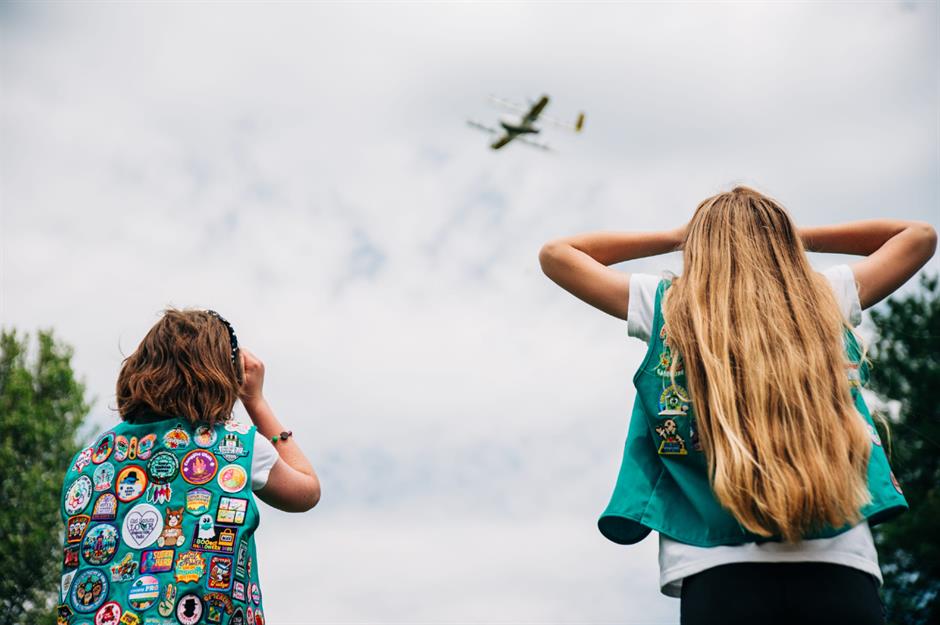
COVID-19 made selling cookies an unprecedented challenge for America's Girl Scouts, with the nationwide organisation suspending door-to-door sales in March 2020.
Unfortunately, even with 2021's more relaxed restrictions, sales were still down by 50% during cookie season.
Wing came to the rescue of Girl Scouts across Virginia by giving them access to its drones to deliver cookies that people had purchased online. The Girl Scouts didn't get to fly the drones but they did get to spend time preparing the cookies for flight and learning about the technology.
Drone duty: takeout delivery
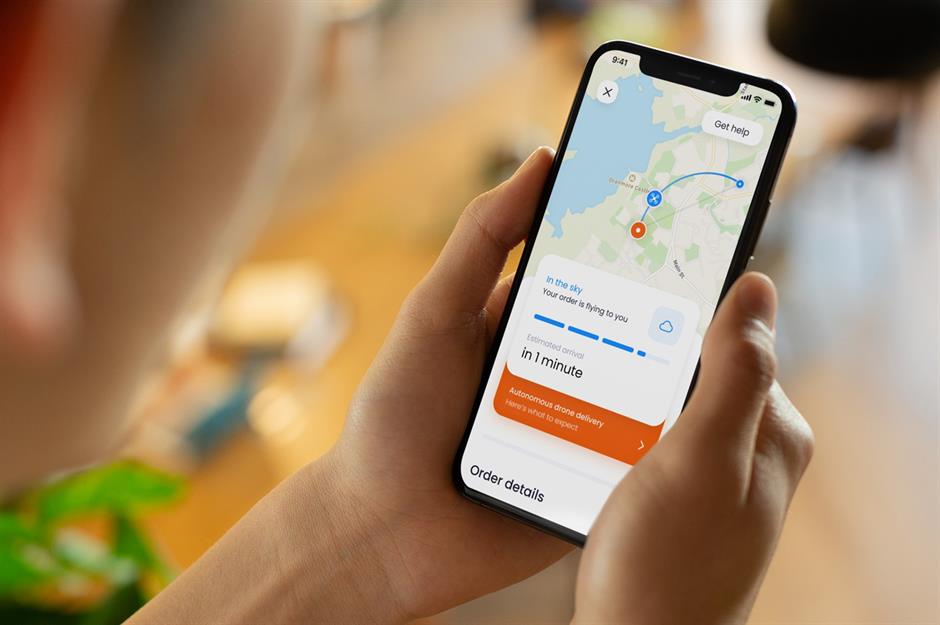
It might sound a bit pie in the sky but that's because, well – it is.
In February 2020, several food companies paired up with drone firm Manna to trial drone deliveries on the University College Dublin campus in Ireland.
The service launched with just a handful of options and quickly expanded to work with more than 30 restaurants and shops.
Manna CEO Bobby Healy announced this summer that Manna will open in another Dublin suburb soon, with additional plans to break into the US and Europe over the next 12 months.
Drone duty: delivering food on the golf course
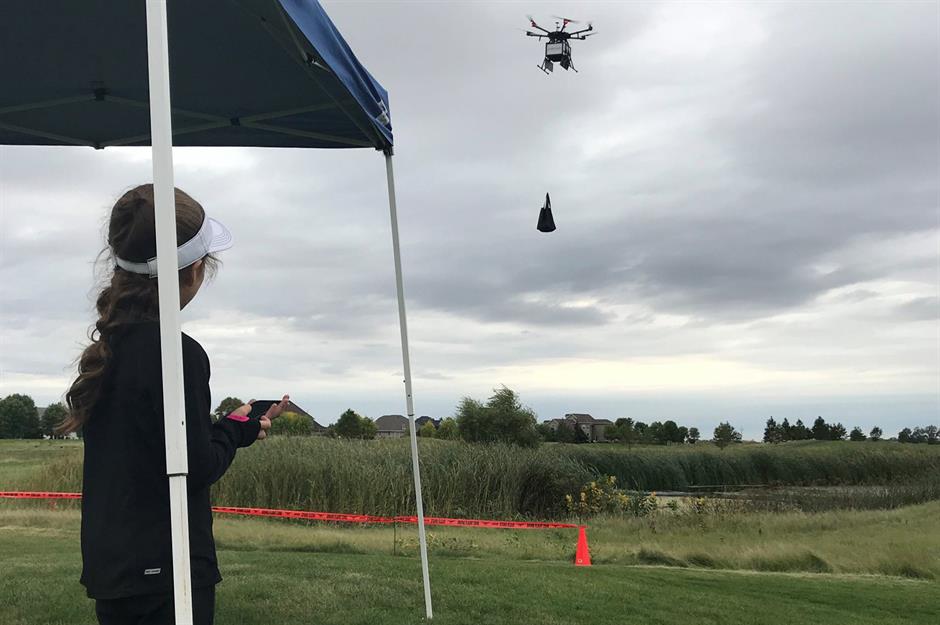
Delivering takeout by drone isn't entirely new in the US – in fact, they're even doing it on the golf course.
In 2018, the Israeli start-up Flytrex partnered with Grand Forks-based EASE Drones to deliver food and drinks to golfers in Grand Forks, North Dakota.
Using a phone app to take their orders and process payment, the drones proved to be a cheaper option than sending a food cart around the green.
The companies collaborated again in 2020 to drone-deliver essentials to Grand Forks households from a nearby Walmart during the pandemic.
Drone duty: insurance inspections after natural disasters
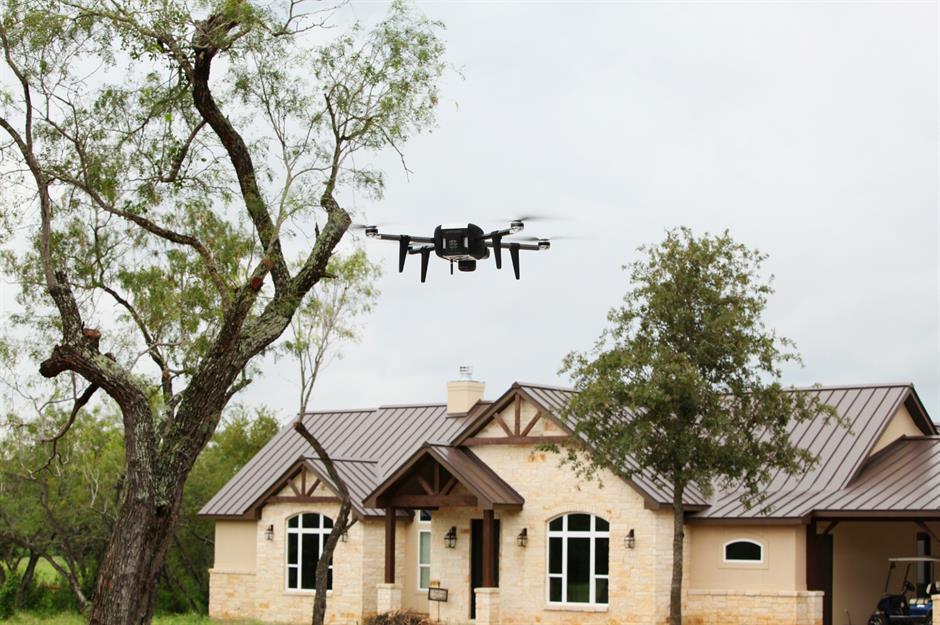
Insurance firm Allstate started looking into drones as a means to safely and quickly assess weather-damaged homes.
Following approval from the Federal Aviation Administration to test the technology, the insurer trialled the drones to gauge the damage caused by Hurricane Matthew in 2016.
Within two years, they'd rolled out the use of drones nationwide. Other insurers using drones to examine property damage claims include Farmers Insurance and USAA.
Drone duty: inspecting construction and infrastructure
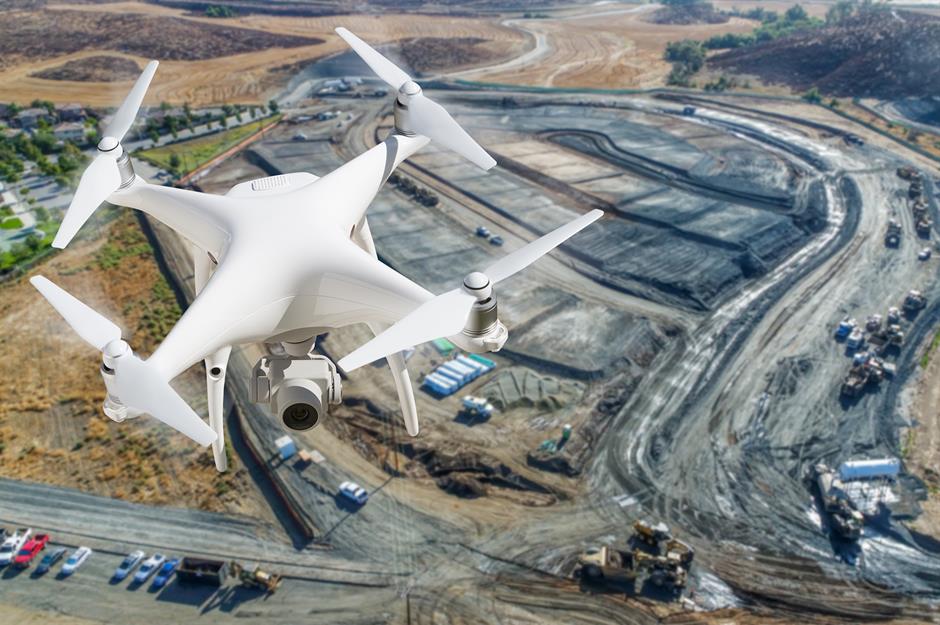
The construction and civil engineering industries are using drones to carry out inspections of infrastructure projects, including the likes of bridges, roads, and railways.
They're also being used to conduct surveys, as well as create maps and 3D models. In fact, the Royal Institution of Chartered Surveyors reports that drones are now crucial tools on any construction job site.
Drone duty: making agriculture more efficient
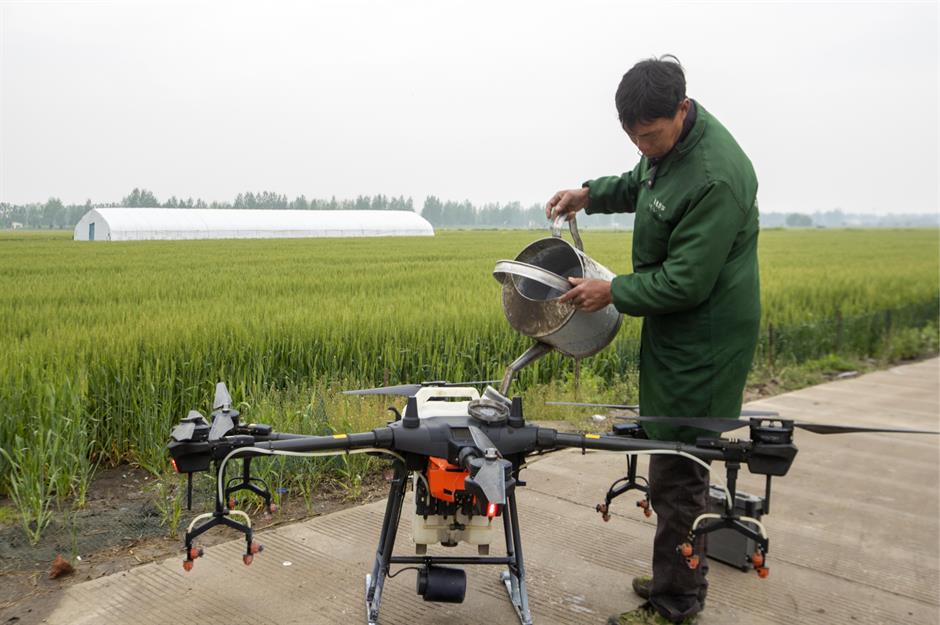
Drones have widely been welcomed in the agriculture sector as they make monitoring crops significantly easier.
Farmers can quickly inspect fields and assess the areas that might need irrigation, and can also make 3D maps for seed planting.
Many drones can dispense pesticides or drop seed pods for planting; at this rice field in Jiangsu, China, for example, a farmer is shown filling a drone with pesticides that will be sprayed over crops.
Drone duty: maintaining wind turbines
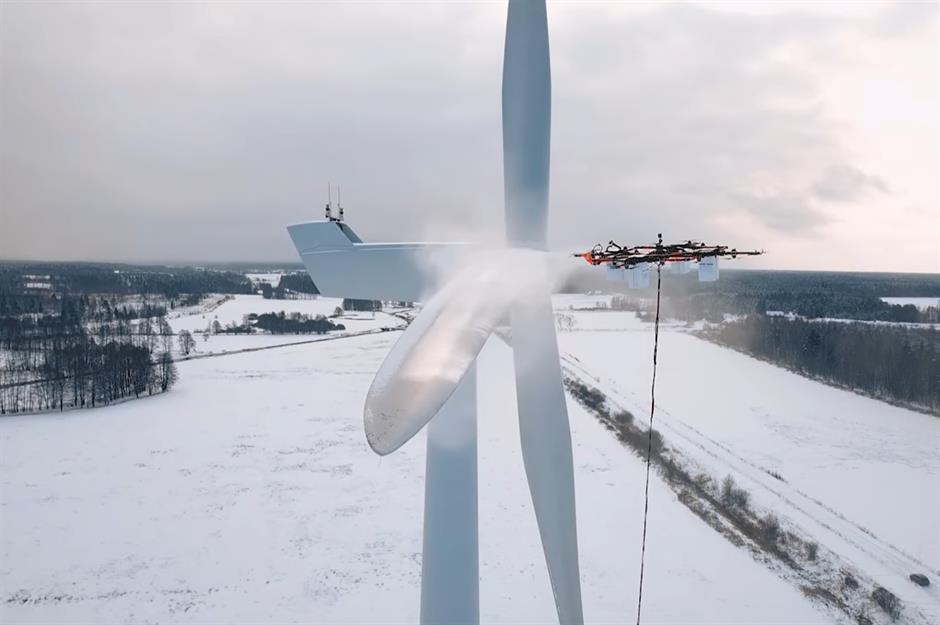
Drones are also being used to help cut maintenance costs in the wind power sector.
Wind turbines accumulate dust and debris, which can impair performance. Cleaning the blades usually requires a team of two or three people, and requires stopping the turbine for several hours. Likewise, ice build-up can change the shape of blades, with de-icing normally involving expensive helicopters.
However, Latvia-based UAV company Aerones has a solution: a drone that can be used to maintain and clean large structures. The firm first tested out its innovative design by de-icing turbine blades in November 2018.
Drone duty: fuss-free window cleaning
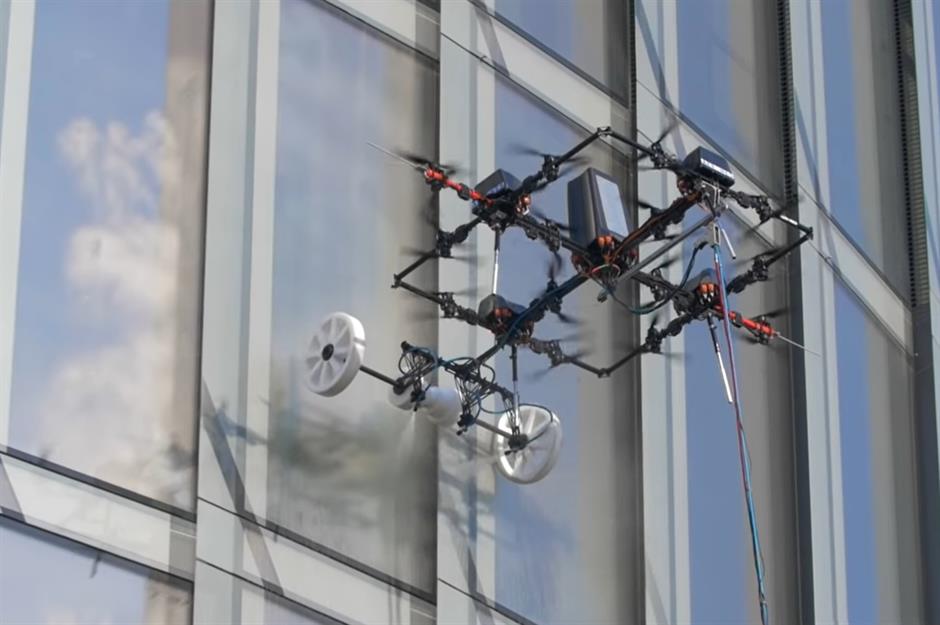
As well as keeping wind turbines squeaky clean, Aerones' UAVs are also able to clean buildings 20 times faster than humans.
They're also able to fly at greater heights than that which firefighters' ladders can reach.
Drone duty: monitoring solar panels
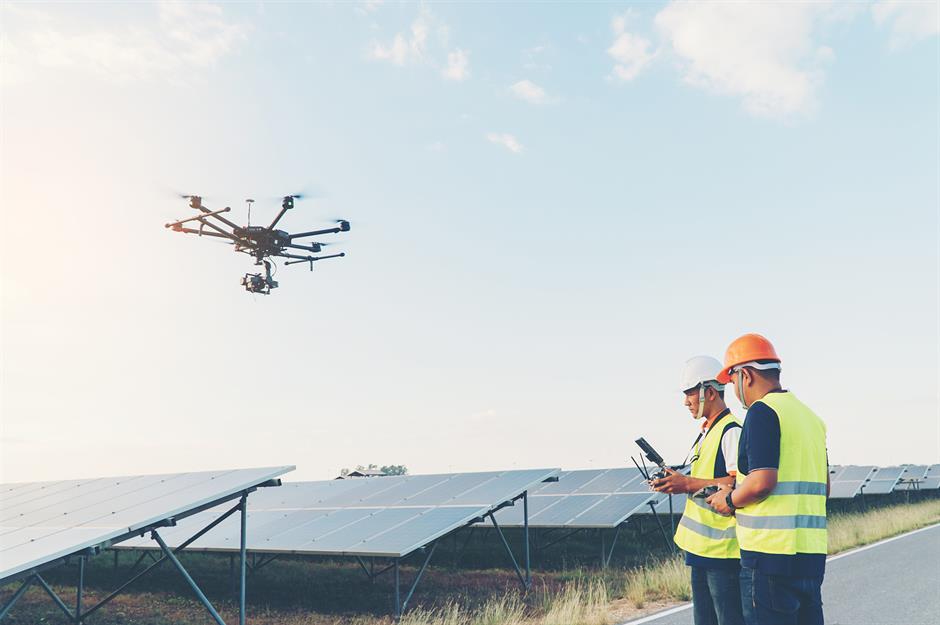
When it comes to renewable energy, drones have a lot to offer, not least that they can easily inspect vast solar farms.
With thermal imaging capabilities, drones can also identify defects or other concerns with a solar panel’s cells.
Scotland's SkyKam even offers its clients the option to use virtual reality headsets for a full 360-degree view of their solar arrays.
Drone duty: light displays at Disney

To celebrate the 30th anniversary of Disneyland Paris in April 2022, the entertainment corporation launched Disney D-light, a light show that finished with 150 colour-changing drones forming a twinkling "30" in the night sky.
Drone shows are increasingly growing in popularity as a replacement for fireworks, particularly in regions where there is a higher risk of wildfires.
Now discover how Disney has taken over the world.
Comments
Be the first to comment
Do you want to comment on this article? You need to be signed in for this feature
Most Popular
Features How Michael Jackson's children boost their bank balances